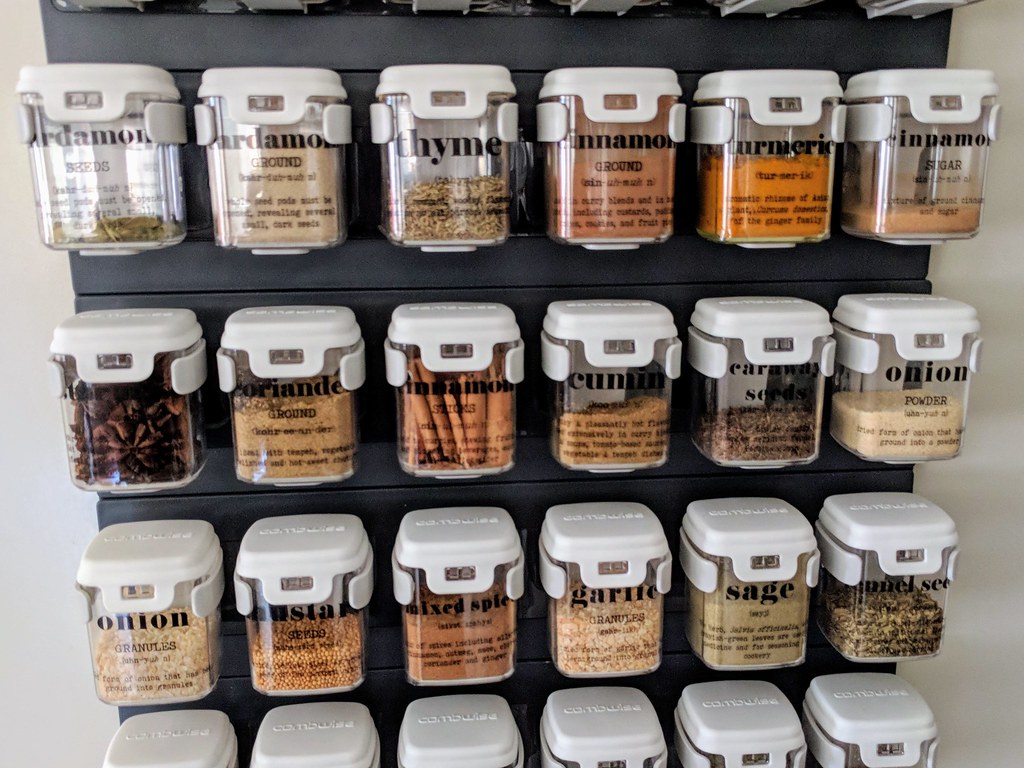Often discussions around technologies and transformation focus on tools. Another question to consider is the way technologies entangled with learning.
I met up with Alan Levine recently and we talked about everything from politics to open education to experiences. The thing that came up again and again though was the place of the technology within learning and education. I have explored this before, touching on the place of the tool in making various situations possible. What seemed different is that the stage set by the conversation seemed a lot busier, with many complex intrarelations. What then is the place of technology in relation to learning? Is it learning about technology? Is it technology that aides with the learning process? Or is it technology that through its place learns itself? This all led me to reflect on the recent addition of the Thermomix into our kitchen this year and impact this has had in regards to my own learning about food and technology.

Thermomix by mrkrndvs is licensed under CC BY-SA
The Thermomix is an all-in-one cooking machine combining a number of steps, such as boiling, melting, chopping, weighing, steaming, crushing and blending. (I am sure I have missed a few verbs here.) The machine itself involves focuses on three variables: time, temperature and motion. However, there are a range of add-ons which extend these capabilities, including a whisk as an alternative to the blade, a steaming basket you insert within the cooking jug and a steaming tray you can place on top. The jug that is at the heart of everything also doubles as a scale, converting all measurements into grams.
One of the things that surprised me about the Thermomix was that it did not necessarily do everything for you. When my wife and I spoke about buying one, I had the misconception that it would allow me to set a timer in the morning (like you might with a slow cooker) or quickly throw everything in after work to wiz something up automagically. Not surprisingly, it is not that simple. Although there are recipe chips which step you through recipes, there is also a built in process of what might be called ‘enforced education’. This asks the user to engage after each step. This is important from a safety point of view, but it is also interesting in regards to appreciating how the application works.
One of the biggest ways the Thermomix has redefined our kitchen is our use of individual ingredients over prepackaged jars and sachets. Recipes often involve combining a wide range of ingredients, especially herbs and spices.

Secret Herbs and Spices by mrkrndvs is licensed under CC BY-SA
This has led to a deeper appreciation of the food being cooked and consumed. It means if something is bland or too spicy then you can make our own tweeks next time. Going a step further, there are a range of online communities building on the standardised language provided by the Thermomix to share an array of recipes and creations. Overall, the Thermomix has helped build my knowledge and understanding of food providing me with the means to go beyond the automated processes and complete steps individually.
This whole learning curve also reminds me of the experience provided by Zapier. A ‘translator of APIs’, Zapier provides the means to automate processes by connecting together a range of web apps. It provides the structure of triggers and actions to step through the creation of workflows. Unlike IFTTT, users can then look into their ‘zaps’ and investigate the intracies, such as the data coming in and going out. Although Zapier eliminates the need to code, it also helps to build up an appreciation of what is required if you do want to start developing your own solutions.
When I think about both the applications, I am reminded about learning on multiple levels. Firstly, they put in place support for the development of understanding as to how the application works. They support learning about other things, such as food and APIs. They also learn themselves, being entangled within a feed of information from other applications and communities.
So what about you? What place does technology play within your learning? As always, comments welcome.
If you enjoy what you read here, feel free to sign up for my monthly newsletter to catch up on all things learning, edtech and storytelling.
Learning Technologies by Aaron Davis is licensed under a Creative Commons Attribution-ShareAlike 4.0 International License.

The Thermomix as ‘all-in-one’ cooking machine strikes me as an excellent example of assemblage Aaron, perhaps even a learning assemblage. It (and the various configurations), the instructions, the ingredients which go in, the food which comes out, recipes, you, your family, are completely entangled together and assemble differently when one of these actors changes … or a new one becomes involved. An allergy that emerges in a family member would change the assemblage completely. One might argue, well OK, that doesn’t change the Thermomix, but in assemblage thinking, that wouldn’t be the point. The Thermomix is not an isolated performer in the Davis household food prep, it is part of the assemblage. If wheat or dairy products had to be excluded, then the assemblage would shift to accommodate it. One might even say it learned.
[As someone attempting to come to grips with this form of thinking, I’d be happy to be corrected]
Having just spotted the timestamp, I like that commenting on the post of a friend in Oz means my words travel into the future #timetravellingcomments
Spreadsheet.com provides another ‘no code’ solution integrating with a number of other applications.
ᔥ “Clive Thompson” in Spreadsheets Are Hot—and Cranking Out Complex Code | WIRED (05/10/2022 20:55:29)